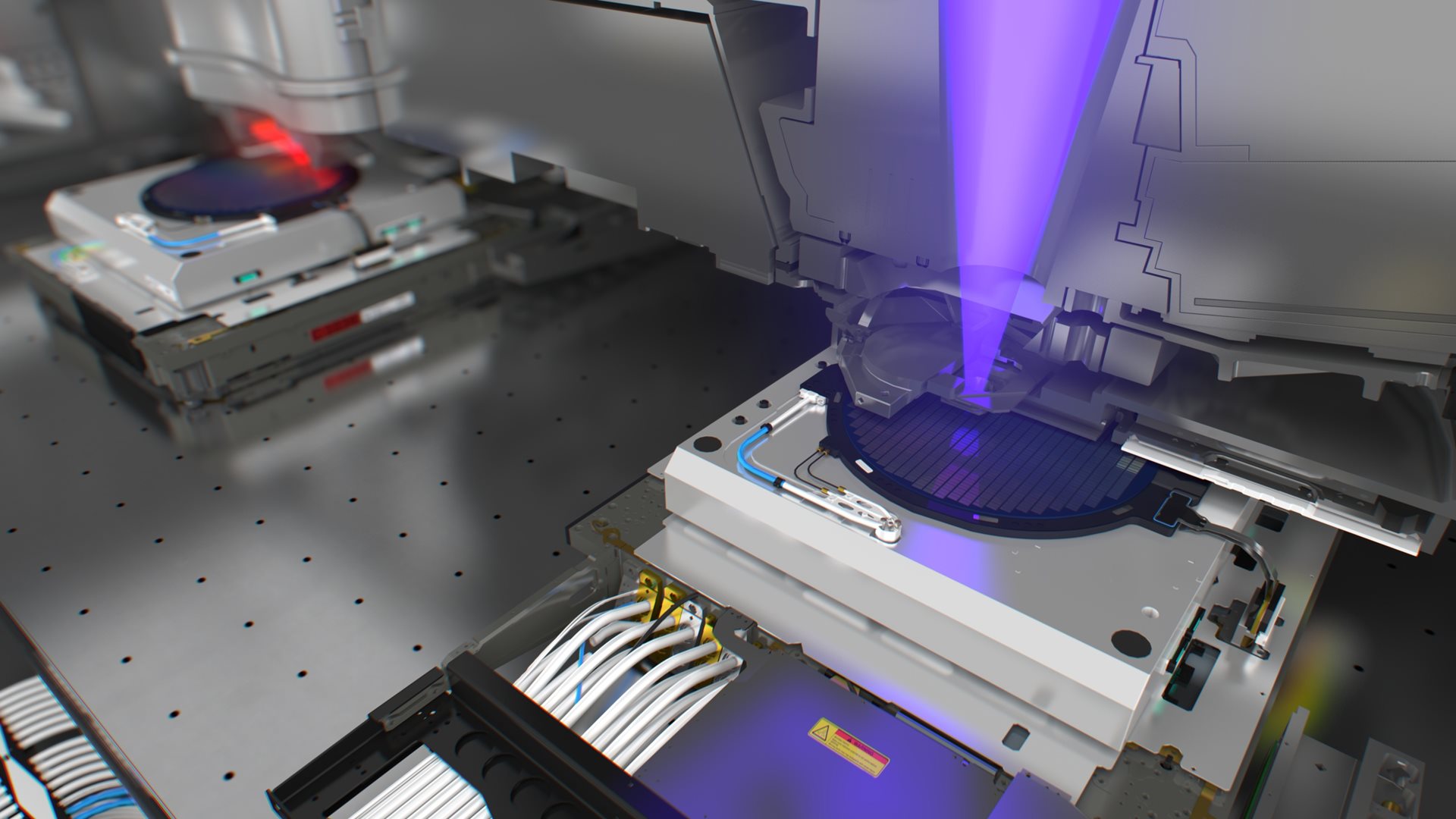Press release - Taipei, Taiwan – SEMICON Taiwan, September 12, 2007
ASML Holding NV (ASML) today announced that a Taiwanese customer using its TWINSCAN i-line scanners has achieved an unprecedented level of 300 mm productivity by processing 150 wafers per hour for 24 hours, reaching a record output of 3,596 wafers in a single day.
These recent results were achieved using a TWINSCAN XT:400F i-line scanner, one of more than 700 TWINSCAN systems installed worldwide. TWINSCAN systems employ ASML’s patented dual-stage wafer-processing technology, where both stages alternate between metrology and imaging functions to enable non-stop wafer imaging. Later this year, the range of i-line scanners will be complemented by the new XT:400G model, which will increase throughput by another 10%.
The new record proves the significant value of ownership benefits of these systems for semiconductor manufacturers, while also allowing them to use less of their valuable factory floor space for i-line processes. ASML’s 300 mm i-line scanners are built on the same TWINSCAN platform as its other 300 mm scanners, offering chipmakers the potential for easy upgrades and better matching performance. Memory chipmakers in particular are benefiting from the high productivity of ASML’s i-line scanners, which work seamlessly with advanced KrF and ArF systems.
“Our i-line machines are future-proof. Not only do they offer the highest industry throughput, they also provide the tightest overlay available for 45 nm processes in volume production,” said Bert Koek, general manager of 300 mm business at ASML. “Overlay in the back-end layers will be one of the critical success factors in coming years as memory chip makers move to 45 nm immersion lithography.”
ASML’s 300 mm i-line lithography systems – which offer a mature, yet efficient technology for imaging relatively large chip features – are gaining popularity with chipmakers because of their high performance and low cost. The unique combination of advanced technology and high productivity has helped i-line lithography remain an essential technology for chipmakers seeking to optimize their production infrastructure.
“i-line remains an excellent technology for necessary, but less critical, 250-nanometer chip features,” said Klaus Rinnen, managing vice president, Gartner Inc. “Even after advanced lithography moves on to 45 nm and smaller device features, there is still going to be a significant place for i-line for many years to come.”
ASML sold 30 300 mm i-line machines in the first half of 2007, more than the total number sold during 2006.
About ASML
About the productivity numbers
About i-line


